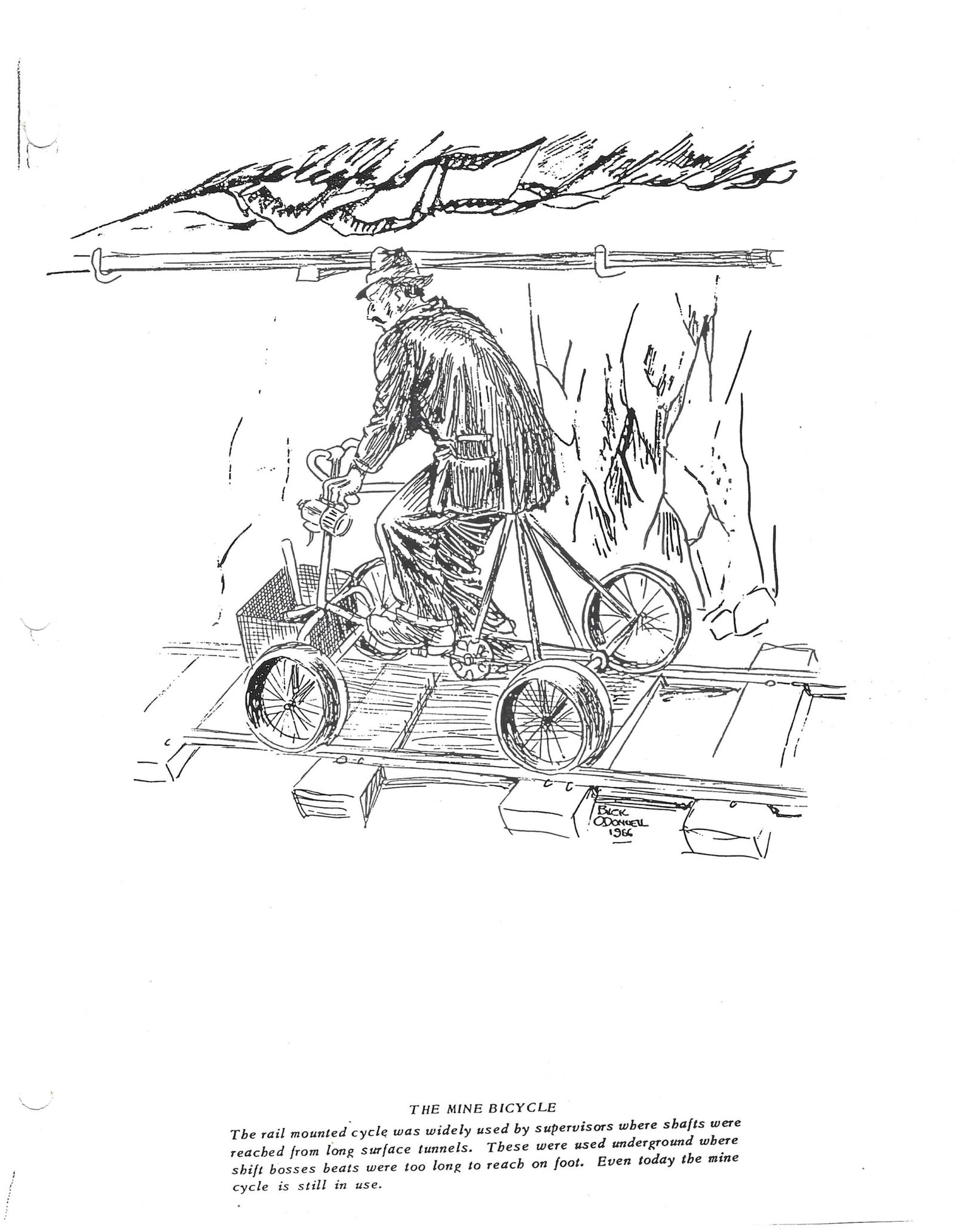(Ink illustration by Buck O’Donnell in 1967; public display, World Museum of Mining, Butte, Montana, USA)
The underground mining tunnels stretched for miles. A labyrinth of rails that went all around the operations to haul the ore. The men could be working in different sections of the mines far apart from one another. The boss would need to check up on them and it would take a considerable amount of time to get from one location to the other.
The need to improve efficiency and make work easier lead to the creation of various improvised modes of transportation. Mine workers adapted devices used on the surface for use in underground mines, with modified bicycles being the most common solution.
Bicycles, popular in urban areas, became popular in underground mines, particularly in Germany, the Netherlands and then the United States. The rail mounted cycles could quickly and easily cover long distances in a short amount of time. Making the supervisors job that much more efficient.
At first, these bikes were made in-house in mine workshops. Some thought they could cash in on the novel idea by mass producing them. One industrious man designed his version of the rail cycle.
In 1954, Scharf GmbH in Hamm, Germany introduced the Grubenflitzer, the first commercially available miners’ bike. Over the years, various models of the Grubenflitzer were developed and used by miners to reduce ineffective working time, improve work efficiency, and quickly transport people and small loads over significant distances.
The bike had limited commercial success because it was easy for machinist to just copy it or produce their own version in their shops. It was a lot cheaper than buying one. It was not that complicated, and the materials used like the bike frame with pedals and chain, track wheels, and a seat were easily obtainable.
The use of “Boss’s Bikes” in Bisbee mines began in the mid-1960s as a convenient mode of transportation for shift bosses to inspect each workplace during their daily duties. These bikes were made in the mine shops and equipped with accessories like a light, a front basket and a back platform for carrying tools.
However, they had a major design flaw, they lacked brakes and were known to derail on curves, making it necessary to walk around them to avoid accidents. Despite the lack of brakes, they were lightweight and could be easily lifted off the track to allow trains to pass.
The main advantage of the miners’ bike was its speed and efficiency. It wasn’t uncommon for the miners to jump on the back or ride on the handlebars. It was a diversion and many a miner had fun with the boss’s bike. But it also had disadvantages such as difficulty in assembly, sensitivity to floor heaving, and a failure to meet safety regulations.
With the increasing amount of machinery in mine workings, rail deformation caused by floor heaving, and increasingly restrictive safety regulations led to the abandonment of miners’ bikes.
The growth of suspended railways in popularity also led to the disappearance of typical rails from mine workings, further contributing to the decline of miners’ bikes.

